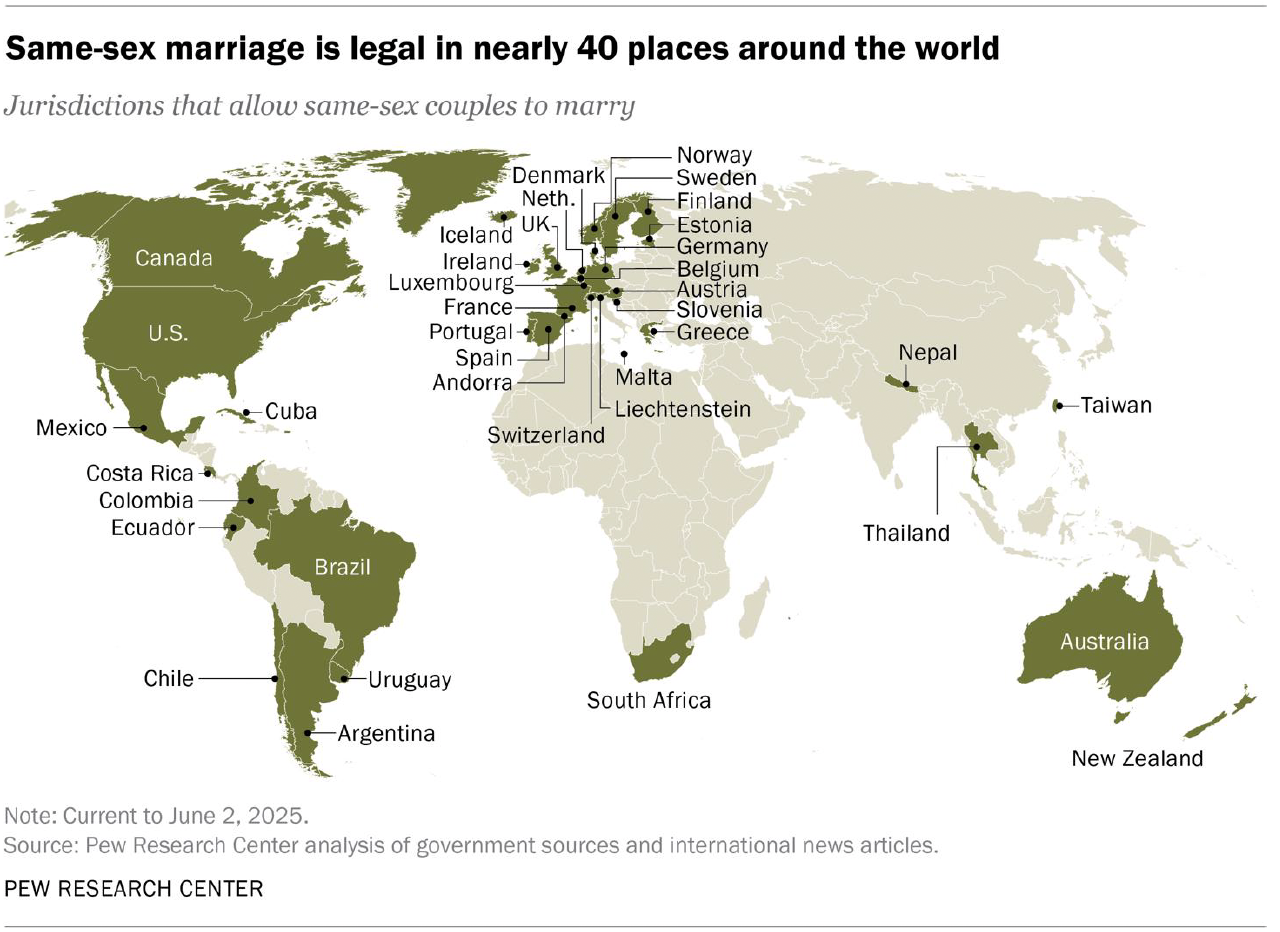Map of Countries with Legal Same-Sex Marriage


Marcus Rodriguez
Historical Geography Expert
Marcus Rodriguez specializes in historical cartography and geographic data analysis. With a background in both history and geography, he brings unique...
Geographic Analysis
What This Map Shows
This map visually represents the global landscape of countries where same-sex marriage is legally recognized. From North America to parts of Europe, and even some nations in South America and Africa, the map highlights a significant shift in social and legal attitudes toward marriage equality. As we delve into this topic, it’s essential to understand the broader implications of these legal recognitions and how they reflect cultural changes around the world.
Deep Dive into Same-Sex Marriage Legislation
Same-sex marriage, a vital aspect of LGBTQ+ rights, has seen a remarkable evolution over the past few decades. Initially, the concept of marriage was predominantly viewed through a heterosexual lens. However, as societies began to embrace more progressive values, the legal recognition of same-sex unions emerged as a crucial step toward equality. According to the Pew Research Center, as of now, over 30 countries have legalized same-sex marriage, showcasing a remarkable shift in public opinion and legal frameworks worldwide.
Interestingly, the first country to legalize same-sex marriage was the Netherlands in 2001. This landmark decision paved the way for other nations to follow suit. Countries like Belgium, Spain, and Canada quickly adopted similar laws, reflecting a growing trend toward inclusivity and acceptance. Today, nations such as Germany, Australia, and Taiwan have also embraced the idea, recognizing the importance of marriage equality in fostering a fair society.
The impact of legalizing same-sex marriage extends beyond the realm of romance. It has profound implications for various aspects of life, including legal rights, taxation, and healthcare. In countries where same-sex marriage is recognized, couples often gain access to spousal benefits, inheritance rights, and adoption opportunities, which can significantly enhance their quality of life. Moreover, the recognition of same-sex unions often correlates with broader acceptance of LGBTQ+ individuals within society, leading to decreased discrimination and increased visibility.
However, the journey toward marriage equality has not been without challenges. In many regions, opposition remains strong due to cultural, religious, and political factors. Countries in parts of Africa and the Middle East, for instance, have seen significant backlash against LGBTQ+ rights, with some even enforcing harsh penalties against same-sex relationships. It’s crucial to recognize that the map not only highlights progress but also serves as a stark reminder of the work still needed in many areas of the world.
Regional Analysis
Examining the map more closely reveals distinct regional patterns regarding the legalization of same-sex marriage. In Europe, for instance, Western nations have largely embraced marriage equality, while Eastern European countries tend to lag behind. Countries like Sweden and the UK are at the forefront, having recognized same-sex marriages for several years. In contrast, nations such as Poland and Hungary exhibit significant resistance, often influenced by traditional values and political stances.
In North America, the United States is a unique case. Following the Supreme Court's ruling in Obergefell v. Hodges in 2015, same-sex marriage became legal across the country. However, the map indicates that some states still have laws that restrict LGBTQ+ rights, showcasing a divided landscape. Canada, on the other hand, has been a leader in this movement, having legalized same-sex marriage nationwide in 2005.
South America presents a mixed picture, with countries like Argentina and Brazil allowing same-sex marriage, while others remain resistant. Interestingly, Taiwan made history as the first Asian nation to legalize same-sex marriage in 2019, showcasing a shift in attitudes in a region often seen as conservative regarding LGBTQ+ issues.
Significance and Impact
The legalization of same-sex marriage is not merely a legal formality; it signifies a society's commitment to equality and human rights. This topic matters because it reflects the ongoing struggle for recognition and acceptance of LGBTQ+ individuals in various cultural contexts. The presence of legal same-sex marriage can lead to positive societal changes, including increased visibility and representation for LGBTQ+ individuals, which can, in turn, lead to broader acceptance and reduced stigma.
Interestingly, public opinion on same-sex marriage continues to evolve. Recent polls indicate that support for marriage equality is at an all-time high in many countries, suggesting that younger generations are more inclined to embrace inclusivity. Looking ahead, it's essential to recognize that while progress has been made, the fight for LGBTQ+ rights is far from over. Advocacy continues in many regions, urging for not just legal recognition but also societal acceptance and protection against discrimination.
In conclusion, the map of countries with legal same-sex marriage illustrates a significant shift toward equality, showcasing both progress and ongoing challenges. As we continue to advocate for human rights on a global scale, understanding the geographical dimensions of these laws helps illuminate the path forward for LGBTQ+ individuals worldwide.
Visualization Details
- Published
- September 21, 2025
- Views
- 68
Comments
Loading comments...